5 Elements Of a Story Explained With Examples (+ Free Worksheet)
What do all good stories have in common? And no it’s not aliens or big explosions! It’s the five elements of a story: Characters, Setting, Plot, Conflict and Resolution. Story elements are needed to create a well-structured story. It doesn’t matter if you’re writing a short story or a long novel, the core elements are always there.
This short video lesson explains the main points relating to the five story elements:
What are Story Elements?
Story elements are the building blocks needed to make a story work. Without these blocks, a story will break down, failing to meet the expectations of readers. Simply put, these elements remind writers what to include in stories, and what needs to be planned. By understanding each element, you increase the chances of writing a better story or novel.
Over the years, writers have adapted these elements to suit their writing process. In fact, there can be as few as 4 elements in literature all the way up to 12 elements. The most universally used story elements contain just five building blocks:
- Characters
- Setting
- Plot
- Conflict
- Resolution
These five elements are a great place to start when you need help planning your story. You may also notice that these story elements are what most book outlining techniques are based on.
5 Elements Of A Story
Below we have explained each of the five elements of a story in detail, along with examples.
1. Characters
Characters are the most familiar element in stories. Every story has at least one main character. Stories can also have multiple secondary characters, such as supporting characters and villain/s. The main character should be introduced at the beginning. While introducing this character it is a good idea to include key information about this character’s personality, past and physical appearance. You should also provide a hint to what this character’s major conflict is in the story (more on conflict later).
The main character also goes through changes throughout the story. All the challenges and obstacles they face in the story allow them to learn, grow and develop. Depending on your plot, they might become a better person, or even a worse one – if this is a villain’s origin story. But be careful here – Growth should not be mistaken for a personality change! The main character must stay true to who they are. Deep inside their personality should stay more or less the same. The only thing that changes is the lessons they learn, and how these impact them.
Check out this post on 20 tips for character development for more guidance.
2. Setting
Settings in stories refer to three things: Location, Time Period and Mood. The easiest element to understand is location. Location is the physical place/s the story takes part in mostly. For example, the tale of Cinderella takes part in two main locations: Cinderella’s Palace and the Ballroom at the Prince’s Palace. It is a good idea to explain each new location in great detail, so the readers feel like they are also right there with the characters. The physical location is also something that can be included at the beginning of the story to set the story’s tone.
Next comes the time period. Every story is set in some time period. Some stories especially about time travel may be set across multiple time periods. You don’t always have to include the exact date or year in your story. But it is a good idea that during the planning phase, you know the year or even dates the story is set in. This can help you include accurate details about location and even key events. For example, you don’t want to be talking about characters using mobile phones in the 18th century – It just wouldn’t make sense (Unless of course, it’s a time travel story)!
The final part of the setting is the mood. The mood is the feeling you want readers to feel when reading your story. Do you want them to be scared, excited or happy? It’s the way you explain and describe a particular location, object or person. For example in horror stories, you may notice dark language being used throughout, such as gore, dismal, damp or vile. While a fairy tale such as Cinderella uses light and warm language like magical, glittering, beautiful or happily ever after. The choice of words sets the mood and adds an extra layer of excitement to a story.
3. Plot
The plot explains what a story is about from beginning to end. It can contain multiple scenes and events. In its simplest form, a plot has a beginning, middle and end. The beginning introduces the characters and sometimes shows a minor conflict. The middle is where the major conflict occurs. And the ending is where all conflicts are resolved, and the story comes to a close. The story mountain template is a great way to plan out a story’s plot.
4. Conflict
A story is not a story without conflict. Conflict is also a key part of a story’s plot (see section above). The purpose of conflict in stories is to challenge your characters and push them to their limits. It is only when they face this conflict, do they really grow and reach their full potential. Conflicts can be internal, external or both. Internal conflicts come from inside your main character, such as not having the confidence in themself or having a fear of something. While external conflicts are created elsewhere, such as natural disasters or evil villains creating havoc.
5. Resolution
The resolution is a solution to the main conflict. Without a resolution, the conflict would be neverending, and this could lead to a disappointing ending to your story. Resolutions could include huge battle scenes or even the discovery of new information which changes everything. Sometimes in stories resolutions don’t always solve the conflict 100%. This normally leads to cliffhanger endings, where a small piece of conflict still exists somewhere. But the important thing to remember is that all conflicts need some kind of resolution in stories to make them satisfying to the reader.
Story Elements Examples
We explained each story element above, and now it’s time to put our teachings into practice. Here are some common story element examples we created.
The fox and the crow
The fox and the crow is one of Aesop’s most famous fables. It tells the story of a sly fox who tricks a foolish crow into giving her breakfast away. You can read the full fable on the read.gov website.
Here are the elements of a story applied to the fable of the fox and the crow:
- Characters: A sly fox and a foolish crow.
- Setting: Bright Morning in the woods.
- Plot: A hungry fox is looking for food. The fox notices the crow with cheese in its beak. Using his charming words, the fox tricks the crow into dropping the cheese into the fox’s mouth. The story ends with the fox feeling satisfied, and the crow left with nothing to eat.
- Conflict: The Fox wants the cheese that the Crow has.
- Resolution: Using his charming words, the fox is able to trick the crow into singing. When she starts to sing, the cheese drops into the fox’s mouth.
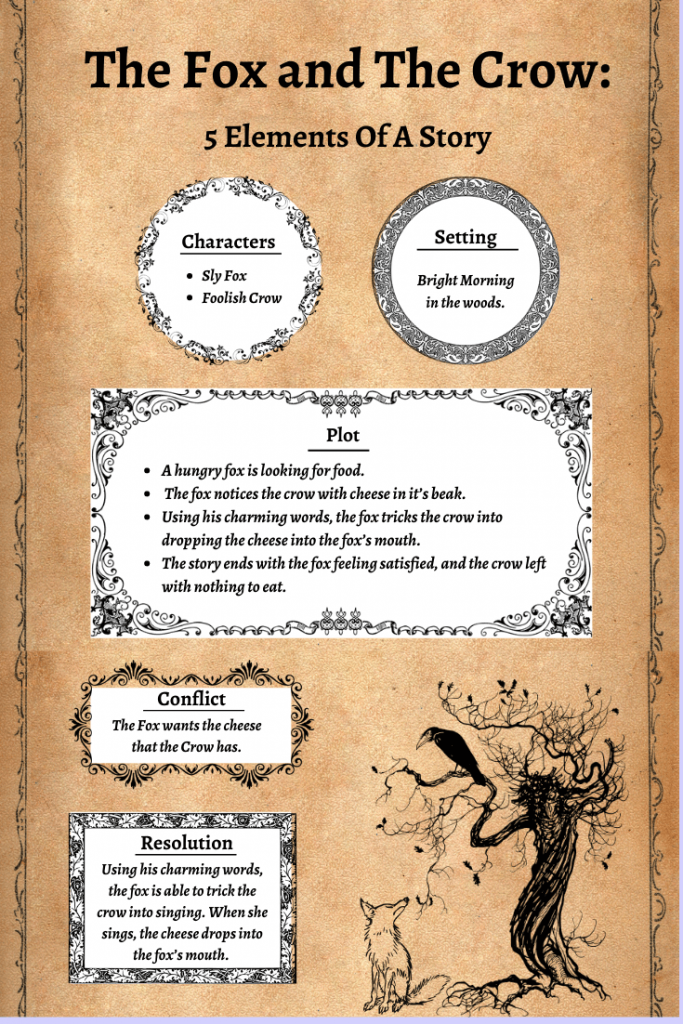
Cinderella
Cinderella is one of the most famous fairy tales of all time. It tells the tale of a poor servant girl who is abused by her stepmother and stepsisters. One night with the help of her fairy godmother, she attends the ball. It is at the ball that the prince falls in love with Cinderella. Eventually leading to a happy ending.
Here are the elements of a story applied to the short story of Cinderella:
- Characters: Cinderella, the stepsisters, the stepmother, the fairy godmother, and the prince.
- Setting: Long time ago in a kingdom. Physical locations include Cinderella’s Palace and the ballroom at the Prince’s Palace.
- Plot: Cinderella’s father passes away leaving her with her horrible stepmother and two stepsisters. They abuse her and make her clean the house all day. One day, an invite comes from the Prince’s palace inviting everyone to the ball. Cinderella is forced to stay at home, while her stepmother and sisters attend. Suddenly Cinderella’s fairy godmother appears and helps her get to the ball. But she must return home by midnight. At the ball, Cinderella and the Prince fall in love. The clock nearly strikes twelve and Cinderella runs away leaving a glass slipper behind. The prince then searches the kingdom to find Cinderella. Eventually, he finds her. The two get married and live happily ever after.
- Conflict: Cinderella must find a way to get away from her stepmother and stepsisters.
- Resolution: Cinderella and the prince get married.
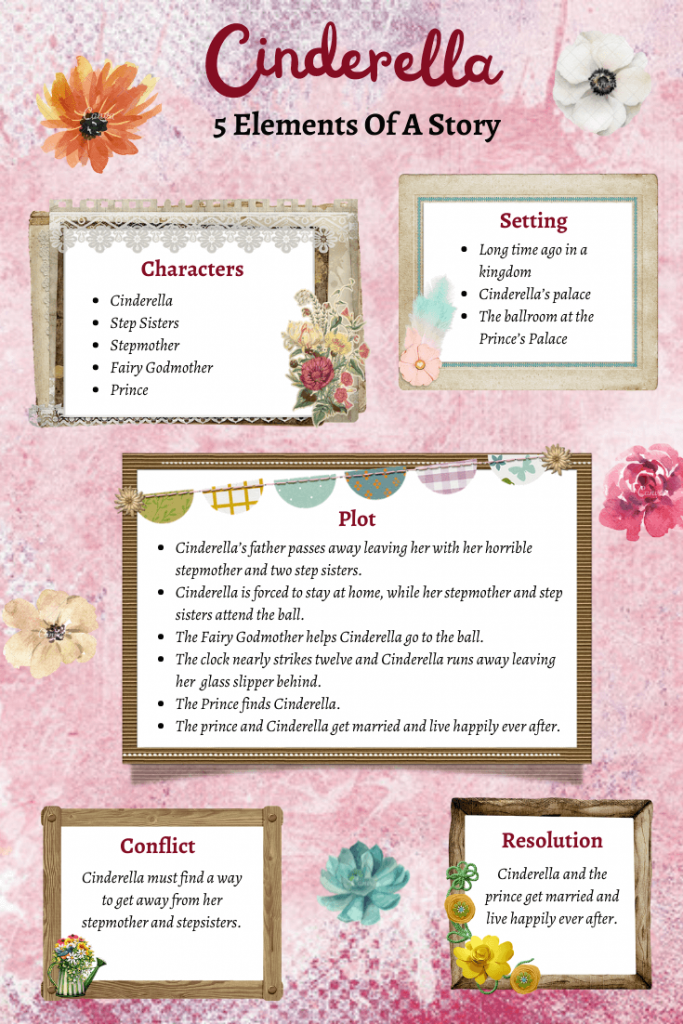
Free Story Elements Worksheet (PDF)
Put everything you learned into practice with our free story elements worksheet PDF. This PDF includes a blank story elements anchor chart or graphic organiser, two completed examples and an explanation of each of the story elements. This worksheet pack is great for planning your own story:
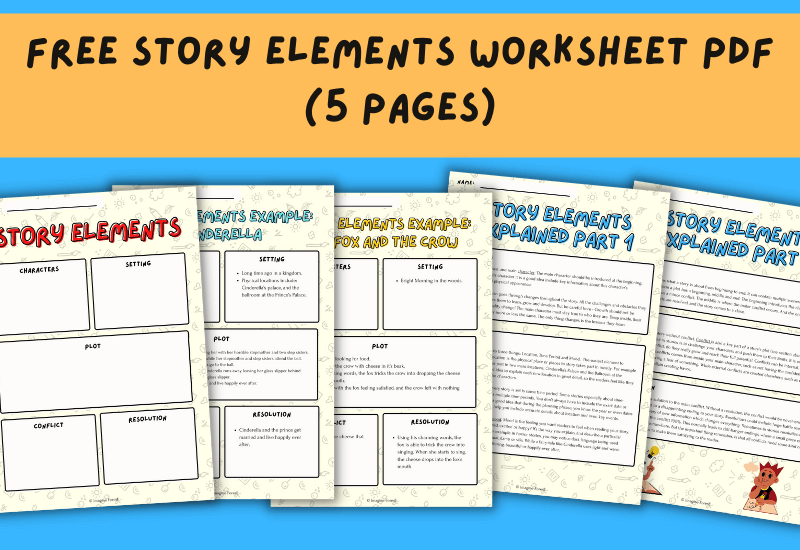
Common Questions About Story Elements
Why Are Story Elements Needed?
Writing a story is a huge task. Simply just putting pen to paper isn’t really going to cut it, especially if you want to write professionally. Planning is needed. That’s where the story elements come in. Breaking a story down into different components, helps you plan out each area carefully. It also reminds you of the importance of each element and the impact they can have on the final story.
What are the 7 elements of a story?
Some writers have expanded the traditional 5 elements to 7 elements of a story. These 7 elements include:
- Theme: What is the moral or main lesson to learn in your story?
- Characters: Who are your main and supporting characters?
- Setting: Where is your story set? Think about location and time period.
- Plot: What happens in your story?
- Conflict: What is the main conflict? Is this conflict internal or external?
- Point of View: Is this story written in first, second or third person view?
- Style: What kind of language or tone of voice will you use?
What are the 5 important story elements?
The 5 elements of a story include:
- Characters: Who are your main and supporting characters?
- Setting: Where is your story set? Think about location, time period and mood.
- Plot: What are the key events that happen in your story?
- Conflict: What is the main conflict? Is this conflict internal or external?
- Resolution: How is the main conflict solved?
What are the 12 elements of a short story?
The longest version of the story elements includes 12 elements:
- Protagonist: Who is the main character or hero of the story?
- Antagonist: Who is the villain of the story?
- Setting: Where is your story set? Think about location and time period.
- Point of View: Is this story written in first, second or third person view?
- Conflict: What is the main conflict? Is this conflict internal or external?
- Sacrifice: What will the main character lose if they fail?
- Rising Action: What action/s lead up to the main conflict?
- Falling Action: What happens after the conflict had ended?
- Message: What is the key message of your story?
- Language: What kind of words would you use? Think about the tone of voice and mood of the story.
- Theme: What is the overall moral or main lesson to learn in your story?
- Reality: How does your story relate to the real world?
What are the 6 important elements of a story?
Some versions of the story elements, completely remove the conflict element. In the 6 elements structure, conflict is included in the plot element:
- Theme: What is the moral or main lesson to learn in your story?
- Characters: Who are your main and supporting characters?
- Setting: Where is your story set? Think about location and time period.
- Plot: What happens in your story? Think about the main conflict.
- Point of View: Is this story written in first, second or third person view?
- Style: What kind of language or tone of voice will you use?
What are the 9 story elements?
We could consider the order of events, in this 9 story elements structure:
- Theme: What is the moral or main lesson to learn in your story?
- Characters: Who are your main and supporting characters?
- Setting: Where is your story set? Think about location and time period.
- Tension: What is the source of conflict?
- Climax: The moment when the main conflict happens.
- Resolution: How is the main conflict solved?
- Plot: What happens in your story?
- Purpose: Why do certain events happen in your story?
- Chronology: What is the order of main events in your story?
What are the 8 elements of a story?
The story elements can also be adapted to contain 8 elements:
- Theme: What is the moral or main lesson to learn in your story?
- Characters: Who are your main and supporting characters?
- Setting: Where is your story set? Think about location and time period.
- Plot: What happens in your story?
- Conflict: What is the main conflict? Is this conflict internal or external?
- Point of View: Is this story written in first, second or third person view?
- Style: What kind of language or words will you use?
- Tone: What is the overall mood of the story? Is it dark, funny or heartfelt?
Got any more questions about the key elements of a story? Share them in the comments below!
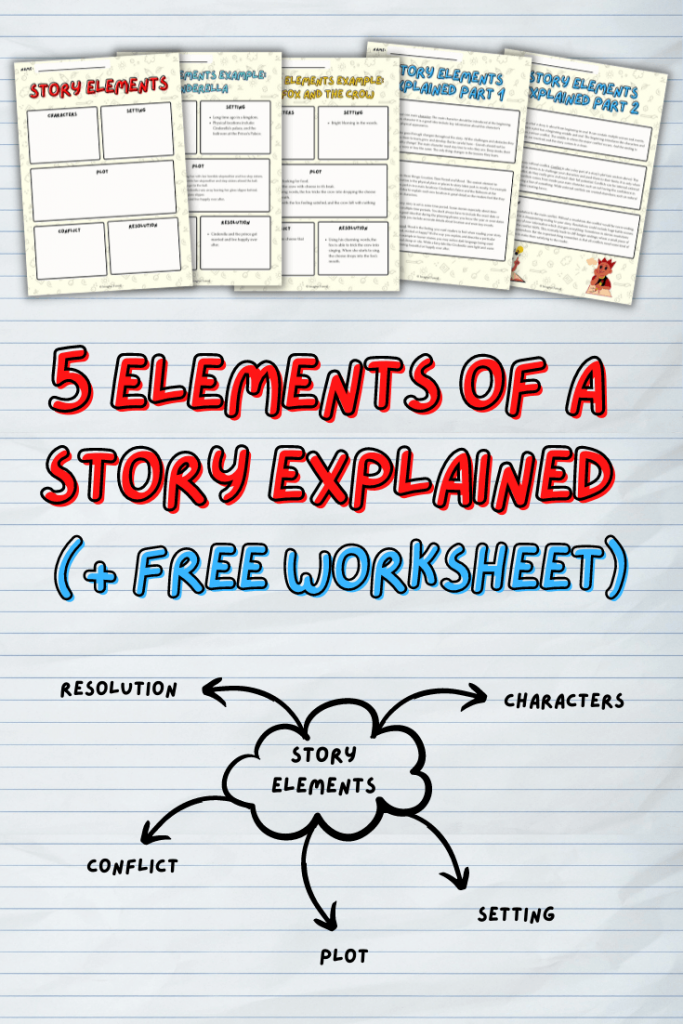

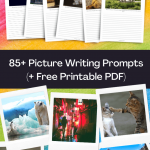

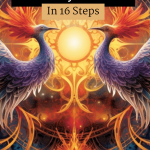
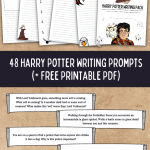
Comments loading...